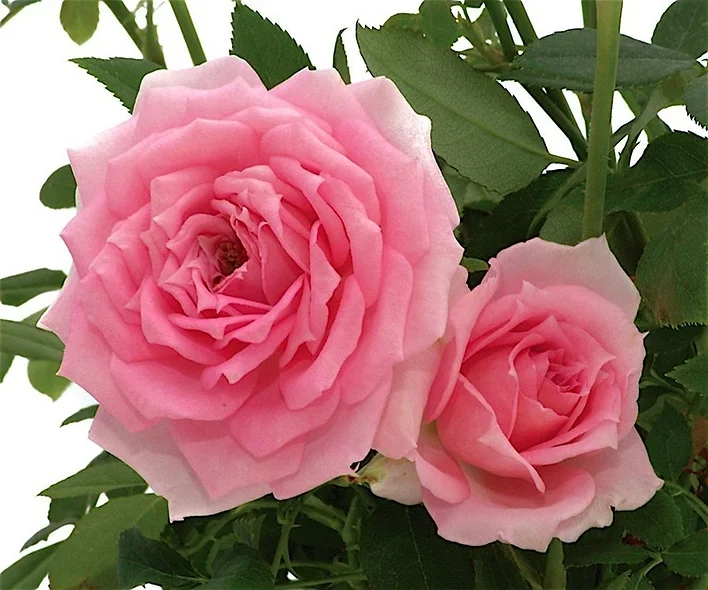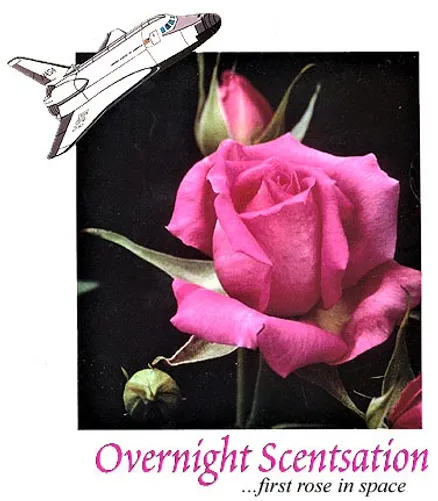
Suzanne Horn
Master Rosarian, Pacific Rose Society
This article is a 2016 Award of Merit winner
Roses & You, June 2020
‘Overnight Scentsation’ is a rose that bears a distinction held by no other. It was the first rose to go into outer space. One of a small number of miniflora roses that actually boasts fragrance, ‘Overnight Scentsation’ (SAVanight) was created by legendary hybridizer F. Harm Saville in 1990 and is classified by the American Rose Society as a medium pink (mp). A cross of the floribunda Taxi and a Frank Benardella miniature rose called Lavender Jade, it was introduced into commerce by Nor’East Miniature Roses in 1999, originally as a miniature rose, since the miniflora class had not yet been established. It was later reclassified as a miniflora. Its real claim to fame is its delicious perfume; and under most atmospheric conditions, it is powerfully fragrant.
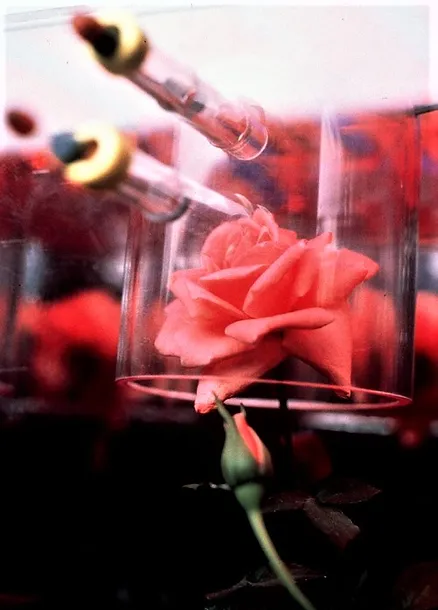
‘Overnight Scentsation’ is one in a small group of miniature and miniflora roses called the “Scentsation series”, which includes memorable roses like ‘Scentsational’ and ‘Seattle Scentsation’. If you like miniflora roses but are disappointed in their general lack of fragrance, this rose will be a pleasant surprise. In fact, Nor’East was quoted as saying that “Overnight Scentsation is the most fragrant mini rose ever with large flowers of bright medium pink, laden with a strong rose scent.” It was because of its extraordinarily strong fragrance that this rose was chosen to go into space in search of a new and exotic scent, engaging in perhaps the most romantic space experiment ever conducted.
In 1913, Gertrude Stein wrote, “A rose is a rose is a rose,” but that may not be the case in space. William Shakespeare wrote, “That which we call a rose, by any other name would smell as sweet.” Although Shakespeare knew a few things about romance and roses, he never considered whether they would smell as sweet in outer space. A rose in space is evidently not the same as a rose on Earth. New fragrances are much sought after in the competitive perfume industry. This is a story of how one company, International Flavors & Fragrances, in search of ways to delight consumers’ senses and in collaboration with NASA, launched itself ahead of the competition to create a fragrance that is literally “out of this world”. IFF researchers quickly learned that what we call a rose does indeed smell sweet in space … but it does not smell the same.
Fragrance in flowers is a variable and elusive commodity, which evolved in order to help plants reproduce by attracting the insects and animals they need to spread their pollen around. The scents themselves come from volatile oils, also known as essential oils, because they carry the essential fragrance of the plant. These volatile oils are concentrated plant extracts that bind to receptors in the olfactory neurons. The fragrance of a rose is made up of nearly 200 different compounds, and the production of these essential oils is strongly affected by the plant’s environment. Some plants produce more oils at night when their pollinator is active, and some produce more in the daytime. Temperature, humidity, and the age of the flower are influential, too.
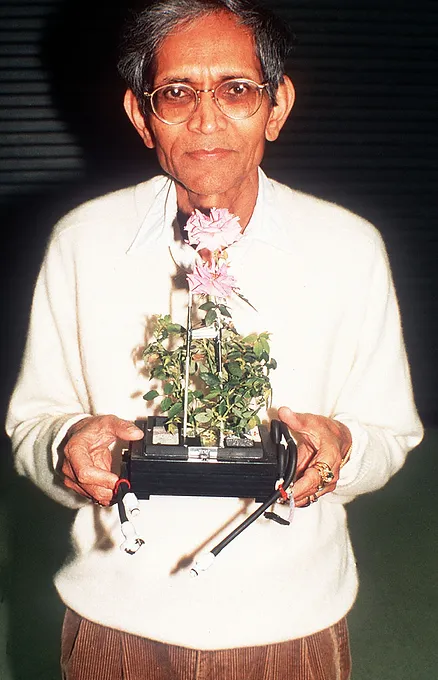
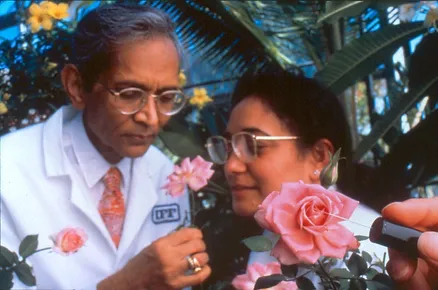
In order to further this research, a rose-related experiment was conducted on the space shuttle Discovery. It was based on a collaboration between NASA and Dr. Braja Mookherjee (pictured here), who until his recent death was a researcher and Director of Global Natural Products at International Flavors and Fragrances. This collaboration involved both science and business. The objective of the experiment was to aid in studies regarding the effects of low gravity on the scent of a rose, in order to help learn how to improve the fragrances of many consumer products. IFF wanted to see how microgravity altered the sweet and familiar scent of a rose, and whether a new perfume component could be extracted from the experiment. The ability to do research in space, concluded Dr. Mookherjee, gives a whole new dimension to the field of fragrance studies. “It’s a fantastic opportunity,” he said, one that the Bard himself might have appreciated.
On October 29, 1998, just prior to its being made available to the public, this rose was sent into orbit on the Discovery mission STS-95, launching from Kennedy Space Center. Also, along on the nine-day mission was Project Mercury astronaut John Glenn, who was 77 at the time, making him the oldest person to ever go into space. The mission crew took a 7-inch plant of ‘Overnight Scentsation’ on the flight for bioscience research. The mission’s objectives involved investigating life science experiments focusing on microgravity research and advanced technology during flight. The experiments were sponsored by NASA, the Japanese Space Agency (NASDA) and the European Space Agency (ESA).
As such, ‘Overnight Scentsation’ was grown under ultraviolet lights in a special Astroculture chamber (pictured here), which was developed at the Wisconsin Center for Space Automation and Robotics, a NASA Commercial Space Center. This chamber provides plants with the appropriate temperature, humidity, light, and nutrients during spaceflight. On the mission, two of the rose’s buds bloomed. Utilizing a gas chromatograph, astronaut John Glenn captured the unique aroma of this rose while living in zero gravity. In order to check their findings scientifically, the Discovery astronauts took four samples of the bloom’s volatile oils by touching a silicone fiber wand to the blooms, which was coated with a liquid to which the molecules adhered. Each of the four times, says Dr. Mookherjee, they got a different result. The scent that they finally arrived at was the average of those samplings.
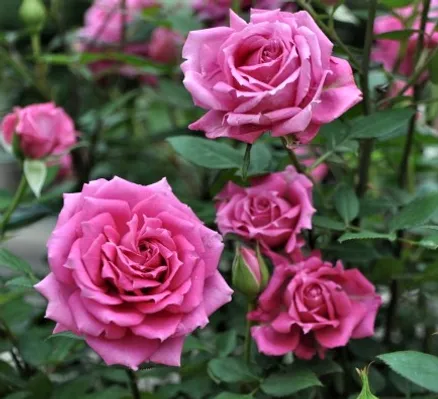
Back on Earth, the IFF scientists analyzed the molecule samples and discovered that the rose produced fewer volatile oils in space than its counterparts did on Earth. Dr. Mookherjee subsequently synthesized that fragrance in the lab to compare it to the one on Earth. He noted, “It’s no wonder that low gravity should affect a flower’s smell just as other environmental factors do.” They found that the rose was affected by the zero-gravity environment, and the overall fragrance it generated was completely different, producing an entirely new scent that was definitely not of this Earth. Instead of a “green, fresh rosy note”, the scent changed to a “floral rose aroma”.
IFF ultimately used their findings to create a scent they called ‘space rose’. The unique space rose note was extracted from the fragrant oils of ‘Overnight Scentsation’, and it is now a perfume ingredient. IFF commercialized the space rose scent, and the new fragrance has since been incorporated into a perfume introduced by Shiseido Cosmetics called “Zen”, which combines three notes for a fragrance that the company describes as floral, woody and spiritual. Although this is the first commercial use of the space rose scent in a fine fragrance, further uses are expected, since the space rose oil can enhance food product tastes, offering new opportunities to the flavors industry.

Of note, NASA flew another rose on a space shuttle in 2008. However, that flower was destined for the annual New Year’s Rose Parade in Pasadena, California, and was not part of a fragrance experiment or used for a perfume.
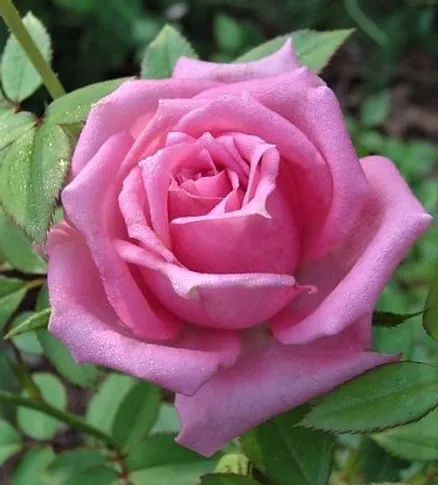
Turning our attention to rose lovers everywhere who might want to grow this lovely rose, ‘Overnight Scentsation’ presents full, hybrid tea shaped blooms that have 41 or more petals and are about two to three inches wide. Those blossoms are occasionally presented in small clusters but most often appear singly as one bloom to a stem. The full-figured blooms are borne on long stems and clothed in soft, matte green foliage. This makes Overnight Scentsation a wonderful cut flower for the home.
In the garden, ‘Overnight Scentsation’ is a strong, vigorous, upright growing plant, reaching a height of between two to three feet and a width of up to two feet. A hardy plant, it is said to be very disease and drought resistant, although I have heard some comments disputing its disease resistance. As such, I would recommend a regular spray program to keep this plant looking its cleanest. It is best grown in organically rich, medium moisture, well-drained loamy soil. It is said to tolerate partial shade, but best flowering and disease resistance generally occur in full sun.
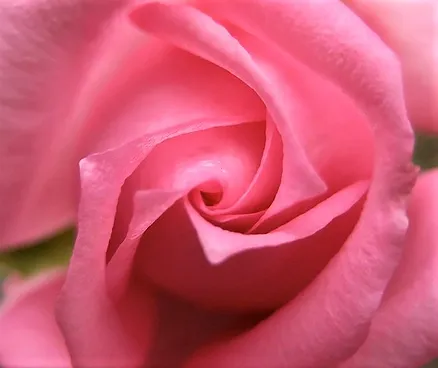
In summary, ‘Overnight Scentsation’ would be a beautiful and fragrant addition to any garden, for arrangements and as a cut flower for the home. It is commercially available at many retail outlets supplied by Greenheart Farms (aka Nor’East Miniature Roses). It can also be found online through vendors and occasionally at rose society auctions. This charming little miniflora rose will perfume your garden and steal your heart. It will also bring a piece of rose history to your collection. I heartily recommend you give it try.
